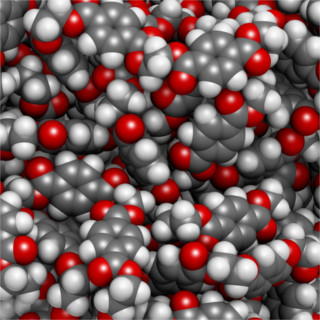Methodology for a formulation of chemical recovery projects through analogies

Published 2018-12-20
Keywords
- Analogy,
- chemical enhanced oil recovery,
- data base,
- off-shore
How to Cite

This work is licensed under a Creative Commons Attribution 4.0 International License.
Abstract
In recent decades, tertiary recovery, especially involving chemical products, has been area of research by the academy and industry. Its ability to reduce the saturation of residual oil (Sor) and increase the recovery factor of a reservoir, make it a highly attractive and worth investing method and. The identification of analogous fields is an important step for planning a CEOR project by its acronym in English (Chemical Enhanced Oil Recovery), especially when there is few information on offshore fields worldwide that have implemented this type of method. This article proposes and evaluates a methodology with the purpose of establishing if an offshore field located in the Santos basin Brazil is a good candidate or not to be subjected to polymer injection. The proposed methodology is defined by four steps: processing of data collected from the search for information worldwide, selection of analogous fields based on the screening proposed by Paris de Ferrer (2001), use of a statistical model and classification of similarity. In the first instance, an analysis and processing of the available database of the offshore fields that have implemented the technique is carried out, then the main properties of rock and fluid that describe each field are identified. Subsequently, the properties of the objective field and those found in the database are compared by means of a statistical model and finally the classification is carried out, using a weighting according to its analogy with respect to the field under study.
Downloads
References
2. Araujo, Y. C., & Araujo, M. (2018). Polymers for application in high temperature and high salinity reservoirs–critical review of properties and aspects to consider for laboratory screening. Revista Fuentes, 16(2).
3. Aya, C. L. D., Guardia, V. M. D., Toro, G. A. M., García, R. H. C., & Pérez, H. I. Q. (2018). Metodología para la priorización de tecnologías emergentes de recobro mejorado químico. Revista Fuentes, 16(2).
Díaz, R. J., Navarro, S. F. M., & Tavera, C. P. S.
(2007). Modelo estadístico para la realización de analogías orientadas a procesos de recobro mejorado. Revista Fuentes, 5(1).
5. Dovan, H. T., Hutchins, R. D., y Terzian, G. A. (1990). Dos Cuadras Offshore Polymer Flood. Society of Petroleum Engineers. SPE-20060-MS.
6. Han, M., Xiang, W., Zhang, J., Jiang, W., y Sun, F. (2006). Application of EOR Technology by Means of Polymer Flooding in Bohai Oilfields. Society of Petroleum Engineers. SPE-104432-MS.
7. Hernandez, F. A. T., Niño, J. C. L., & Moreno, R. L. (2018). Effects of salts and temperature on rheological and viscoelastic behavior of low molecular weight HPAM solutions. Revista Fuentes, 16(1), 19-35.
8. Jiménez, A. M. (2009). Análisis e Interpretación de Yacimientos Sometidos a Inyección de Químicos (Surfactantes, Polímeros y Miscelares) Mediante Analogías. Bucaramanga, Colombia: Universidad Industrial de Santander.
9. Jones, C., Ross, M., Getliff, J., Fuller, M., Hiscox, I., y Mandracchia, F. (2015). Captain Field Injector Performance, Historical Perspective and Recent Improvements. Society of Petroleum Engineers. SPE-174183-MS.
10. Lazzarotti, M., Rimoldi, A., Clementi, A., Mawad, M., y Abd Elrahman, M. (2017). Belayim Land - Polymer Injection Pilot Project. Offshore Mediterranean Conference. OMC-2017-722.
11. López, D. A., León, J. M., Cabrera, F., & Manrique, E. (2017). Evidences of CDG formation and possible interpretations of core flood studies. Fuentes: El reventón energético, 15(2), 31-47.
12. Molano, A. M. J., Navarro, S. F. M., & Díaz, R. J. (2014). Metodología para el diseño de baches en un proceso de inyección de polímeros para recobro mejorado, considerando fenómenos de interacción roca/fluidos. Fuentes: El reventón energético, 12(2), 6.
13. Morel, D. C., Zaugg, E., Jouenne, S., Danquigny, J. A., y Cordelier, P. R. (2015). Dalia/Camelia Polymer Injection in Deep Offshore Field Angola Learnings and In Situ Polymer Sampling Results. Society of Petroleum Engineers. SPE- 174699-MS.
14. Osterloh, W. T. (1998). Polymer Transport and Theological Properties for Polymer Flooding in the North Sea Captain Field. Society of Petroleum Engineers. SPE-39694-MS.
15. Palacio, C. A. (2010). Evaluación de Yacimientos Prospectos para la Implementación de Procesos De Combustión In Situ Mediante Analogías. Bucaramanga, Colombia: Universidad Industrial de Santander.
16. Paris de Ferrer, M. (2001). Inyección de agua y gas en yacimientos petrolíferos. Maracaibo, Venezuela: Ediciones Astro Data SA.
17. Pinto, M. S., Herrera, D. M., & Angarita, J. C. G. (2018). Production optimization for a conceptual model through combined use of polymer flooding and intelligent well technology under uncertainties. Revista Fuentes, 16(1), 37-45.
18. Reid, B. E., Høyland, L. A., Olsen, S. R., y Petterson, O. (1996). The Heidrun Field - Challenges in Reservoir Development and Production. Offshore Technology Conference. OTC-8085-MS.
19. Selle, O. M., Fischer, H., Standnes, D. C., Auflem, I. H., Lambertsen, A. M., Svela, P. y Melien. (2013). Offshore Polymer/LPS Injectivity Test with Focus on Operational Feasibility and Near Wellbore Response in a Heidrun Injector. Society of Petroleum Engineers. SPE- 166343 -MS.
20. Sun,
G., Crouse, B., Freed, D. M., Xu, R., Bautista, J., Zhang, R., ... & Dressler, M. (2018). Polymer flooding–Does Microscopic Displacement Efficiency Matter?. Revista Fuentes, 16(2).
21. Toro, G. M., Herrera, J. J., Orrego, J. A., Rojas, F. A., Rueda, M. F., & Manrique, E. J. (2018). Effect of ionic composition in water: oil interactions in adjusted
22. Xiang, W., y Zhou, W. (2011). Field Experience of Produced Polymer Control in Offshore Oilfield. Society of Petroleum Engineers. SPE- 144277-MS.